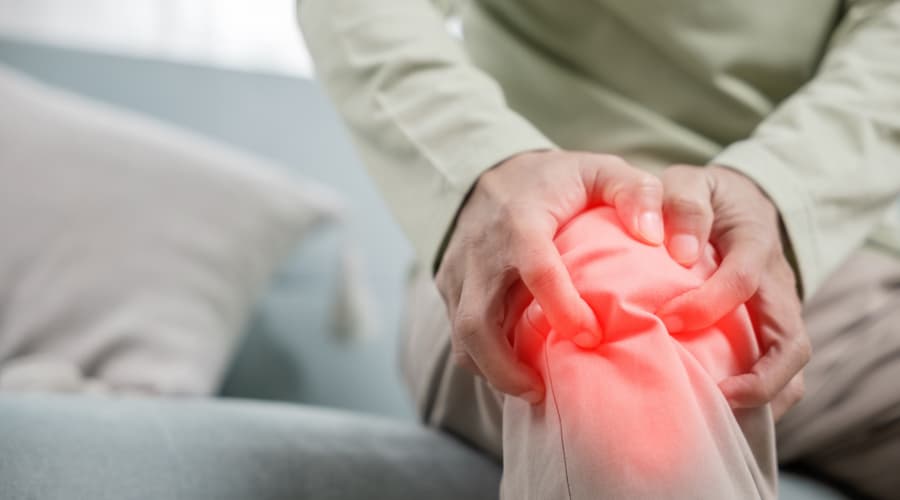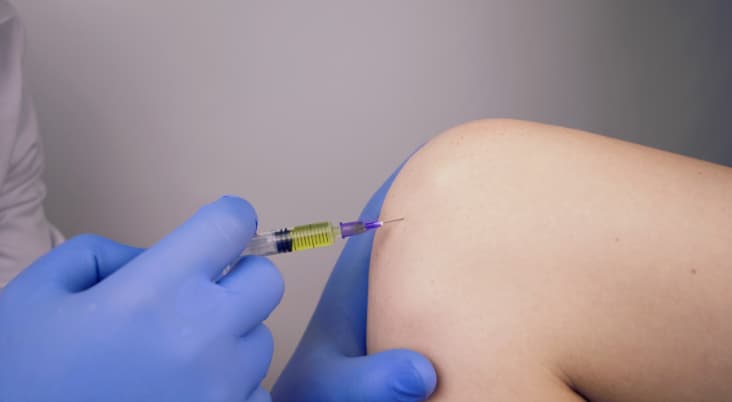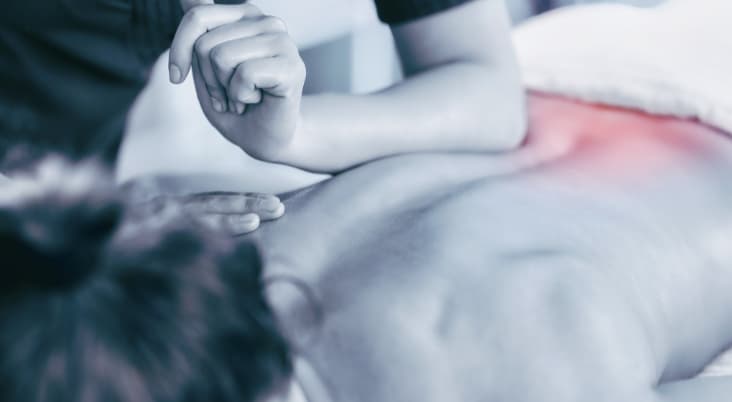Osteoarthritis is the most common type of arthritis affecting people globally. It’s the most common form of arthritis in the UK as well. It happens when the protective cartilage supporting the joints wears down as time goes by. As this happens, the cartilage wears off, the bones at the joints become exposed and the perpetual contact as they rub together leads to the person experiencing pain. It also causes stiffness in the area.
Symptoms of Osteoarthritis
Having issues moving the joint, pain at the joints, and experiencing stiffness are the major symptoms of Osteoarthritis. Also, one may experience a crackling sound when walking, and inflammation.
The thing is, symptoms may vary depending on the person and the joint affected. Some may have it easy and not even be aware that they have the condition as it may be mild. On the other hand, it can be very severe for others deterring them from moving on with their daily tasks.
Mostly, the knee joint is the one highly affected because of moving around and supporting the overall weight of the body.
The tender sensation when you feel the symptomatic area is also a sign of Osteoarthritis.
When you feel around the affected area, the feeling of there being extra bones is also a sign of Osteoarthritis. These are called bone spurs.
The pain and the swelling may persist as the ailment advances. The good news is; early discovery of OA may help you manage or even curb the condition before it becomes severe.
In case of any of the above symptoms, kindly visit your doctor for assessment and proper diagnosis.
Diagnosis
Ideally, it can be very hard to diagnose OA. This is because its development is slow and unnoticeable until the symptoms become hard to ignore. But continuous doctor visits may help in early detection of the condition.
What happens is your doctor will need to examine your joints. And this is not just your knee joint but fingertips, spine, hands, and hips.
You should consider going for a check-up if:
- You have been in an accident that affected any of your joints whether knee or hands
- The kind of stiffness you are experiencing comes and goes after a short while
- You experience pain when moving any of your joints
- You have gotten older, probably 45 years and above
Different people experience symptoms differently. On the same note, different forms of arthritis have slightly contradicting symptoms. For instance, rheumatoid arthritis is characterized by morning joint stiffness that is prolonged.
During diagnosis, other tests blood tests, and X-rays may be required to identify the cause of the pain and swelling. For instance, they may want to make sure that you don’t have a fractured bone. Also, further tests may prove another type of arthritis altogether like rheumatoid arthritis.
Causes of Osteoarthritis
When wear and tear around the cartilage that protects the bones at the joint happens, then this leads to Osteoarthritis. Wear and tear is as a result of continuous movements, something that human beings cannot avoid as we go about our normal lives. So the older you get, the more the wear and tear and therefore age is one major cause of Osteoarthritis.
Other factors that may contribute to the development of the condition include:
- Gender: As much as there is no reason, women are said to be at a higher risk of developing the condition than men
- Joint dislocations: Dislocations and injuries to the joint due to road accidents, or injuries experienced by sportsmen in the field, enhance the risk of developing Osteoarthritis
- Joint deformities: Some are born with malformed bones or defective joints. This increases the chances of developing OA as well
- Obesity: Extra weight plays a major role in developing Osteoarthritis. It adds lots of strain to the knee and hip joints speeding up the wear and tear process. Besides, some proteins are usually released by fat tissues that may detrimental swelling at the joints
- Family history: This is about genetics meaning that some people may actually inherit. Studies have however not discovered a responsible gene yet
- Various metabolic diseases, like diabetes
- Poor posture may also be a risk factor in causing Osteoarthritis and therefore you should be wary not to strain the joints with your posture.
Treating Osteoarthritis
Osteoarthritis is a chroming condition and there is no cure for this disease but it can be managed. There are various treatments to tone down the symptoms like pain alleviation or reducing the inflammation.
Medications
Some medications can help alleviate the pain of the condition which include:
- Duloxetine: This is an antidepressant that is at times prescribed for managing severe pain.
Topical analgesics are available in form of gels and creams. In case of less severe pain, you may consider this as they work by numbing the area around the joint.
- Acetaminophen: For those experiencing less severe Osteoarthritis pain, this medicine has been proved to work perfectly. Patients are advised to only take the recommended dosage as excess may lead to damage of the liver.
- Nonsteroidal anti-inflammatory drugs: These can be acquired over the counter. They include but are not limited to Motrin IB and naproxen sodium. Take them according to instructions by the doctor. Apart from over the counter NSAIDs, there are stronger ones but only available under doctor’s instructions.
- Hyaluronic Acid: Hyaluronic acid is injected directly into the affected painful joint under ultrasound guidance. No medication or anaesthesia is needed for the procedure. The hyaluronic acid acts as lubrication to the joint and because of its viscosity it also has a shock absorption effect which helps protect the joints.
NSAIDs may have severe side effects though. They may cause damage to the liver and the kidney. They may also disrupt the stomach. Besides, they may lead to bleeding issues which is not so good.
Surgical Procedures
In case medications and other forms of treatment have no positive impact, you may opt for surgical options:
- Joint replacement: This procedure entails the surgeon getting rid of your worn out joint features and replacing them with artificial ones. There are risks though such as clotting of blood. Also, the artificial joints are not permanent as they may need to be replaced as well in case they wear out.
- Bone realignment: This procedure is called osteotomy. It is done when one side of your knee is more affected by the other due to osteoarthritis. A bone is either added or removed at a specific angle of the knee. This creates a balance that ensures that the worn-out part of the knee doesn’t strain.
- Lubrication injections: The purpose of this injection is to offer pain relief. The injected substance, in this case, is hyaluronic acid which resembles a substance in the joint fluid. It alleviates pain by ensuring the cushioning of the joint.
- Cortisone Injections: This works by alleviating pain at the joint section. In a year, you can have approximately three to four injections, not more. If injected exceedingly, it may be more harmful than healing.
Therapy
- Physical therapy: There are exercises that can be done to help manage the pain caused as a result of osteoarthritis. Working with trained personnel can help bring positive results by strengthening those muscles at the joint.
- Occupational therapy: With an occupational therapist by your side, you can master ways of going on with your normal tasks without causing pain or affecting the said joint. For instance, with knee osteoarthritis, you can consider performing some of your normal tasks while seated. Place a chair in your shower for example.
- Natural treatments: Come in form of herbs or supplements. Green tea, glucosamine, fish oil, and ginger are some of the supplements that may come in handy. They help in alleviating pain as well as reducing inflammation. Massage is also a good natural way of taking care of the affected joint.
Self-Care for Osteoarthritis
There are actually ways that you as a person affected by the condition can take care of yourself. Self-care is to ensure you manage the pain and hinder the advancement of the condition. Here are some of the routine or lifestyle ways that enhance osteoarthritis self-care.
Exercise:
The idea with exercise is to strengthen the joint muscles which in turn heightens your endurance. The exercises may include swimming, cycling, or even walking. To be more effective, go for about 20 to 30 minutes daily. With a physical therapist by your side, you may discover more exercises that may suit you. If the practice increases the amount of pain, then you should back down from it.
Overdoing the exercises may lead to prolonged pain after the practice and therefore you should take time probably a day or two before considering more exercise.
- Weight loss: This is a preventive measure as well as a self-care routine. Extra weight adds to the strain on your joints particularly the knee and hip joint. You can do this by eating healthy and keeping fit. It will go a long way in not only alleviating the pain but preventing the advancement of the condition.
- Use of heat and cold: Heat can help in the reduction of pain and so can cold. For heat, consider the moist option. This can be done by steaming. Cold on the other hand works by reducing muscle spasms.
- Enough rest: Over movement causes continuous pain and you need to counter this by having enough rest. This can reduce inflammation. Have enough sleep. And if you have knee osteoarthritis, positioning your legs on something like a pillow while seated so the legs can be on a higher ground than the body can be beneficial.
- Diet: First, your diet should work to ensure you cut down on your weight, not the other way round. Reduction in weight ensures that there’s no stress on the joints. Also, according to research, a diet rich in flavonoids highly helps in managing osteoarthritis. Fruits and vegetables are rich in flavonoids so consider eating them in plenty.
Besides, there are free radicals released as a result of inflammation and which may be detrimental to the cells. Fruits and vegetables can help with that as they are filled with antioxidants.
Vitamin D, omega-3fatty acids, and vitamin C are very essential. Consider a diet rich in anti-inflammatory content.
Osteoarthritis affects different joints and can affect different joints, finger knuckles, the wrist, or even the fingertips. There is also knee osteoarthritis, hip osteoarthritis, cervical which apparently those above 60 years of age are prone to acquiring.
Being a chronic illness that advances with time, causing pain and lack of movement, you should work towards preventing rather than waiting to deal with its consequences at a later stage.
Prevention methods include:
- Losing weight: This will ensure that your joints are not stressed accelerating the wear and tear that leads to osteoarthritis.
- Posture: Positioning yourself in a manner that doesn’t strain either of your joints is beneficial.
- Exercise: Ensures that you maintain or lose the extra body weight that may cause strain to your joints.
Related Articles
- Osteoarthritis and Arthritis, Similar But Very Different
- Managing Osteoarthritis (OA) Knee Pain
- Chronic Pain Can Be More Harmful Than You Believe
- Health Benefits of Physical Activity Across Age Groups
- Knee Osteoarthritis (OA) Symptoms and Treatment




























